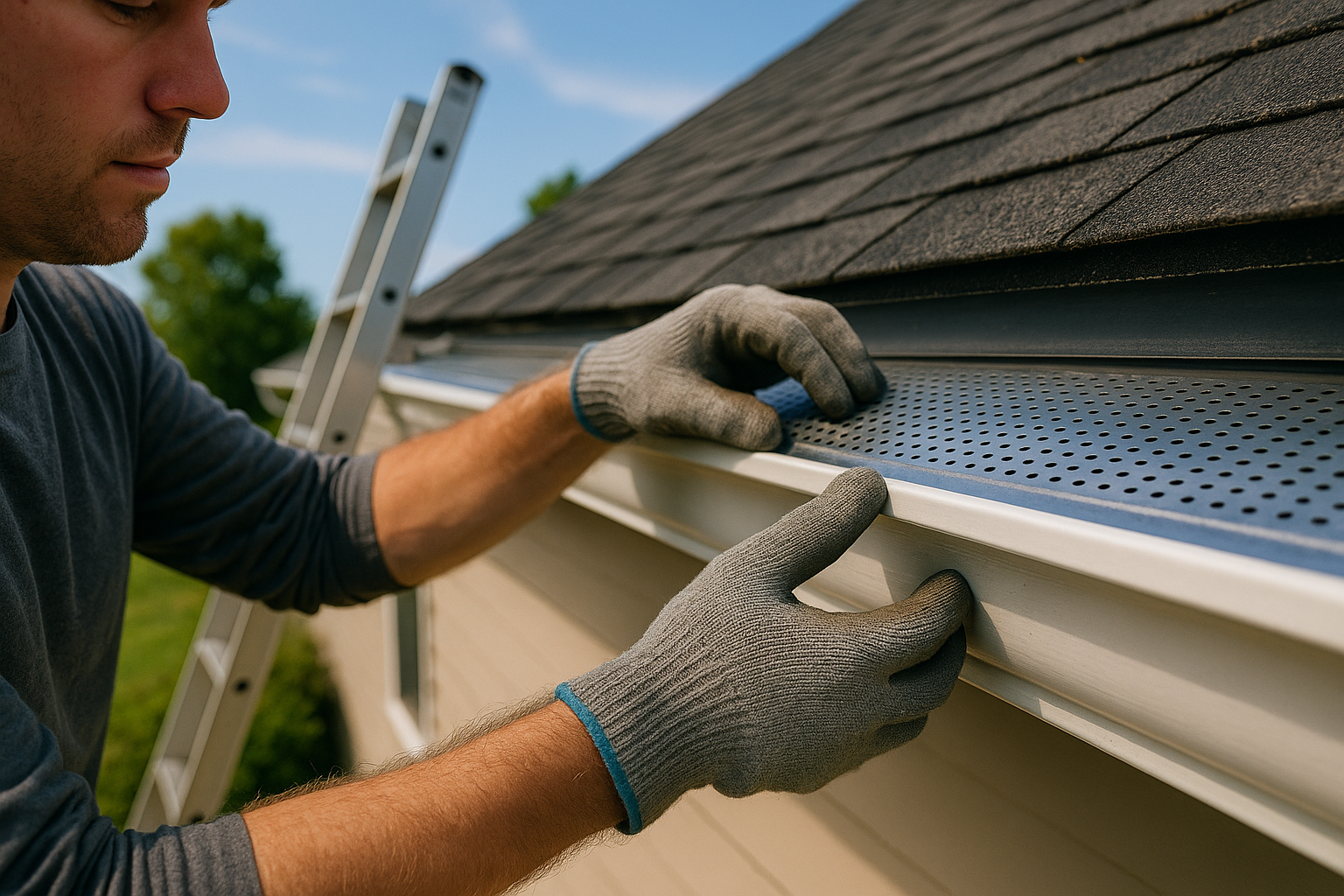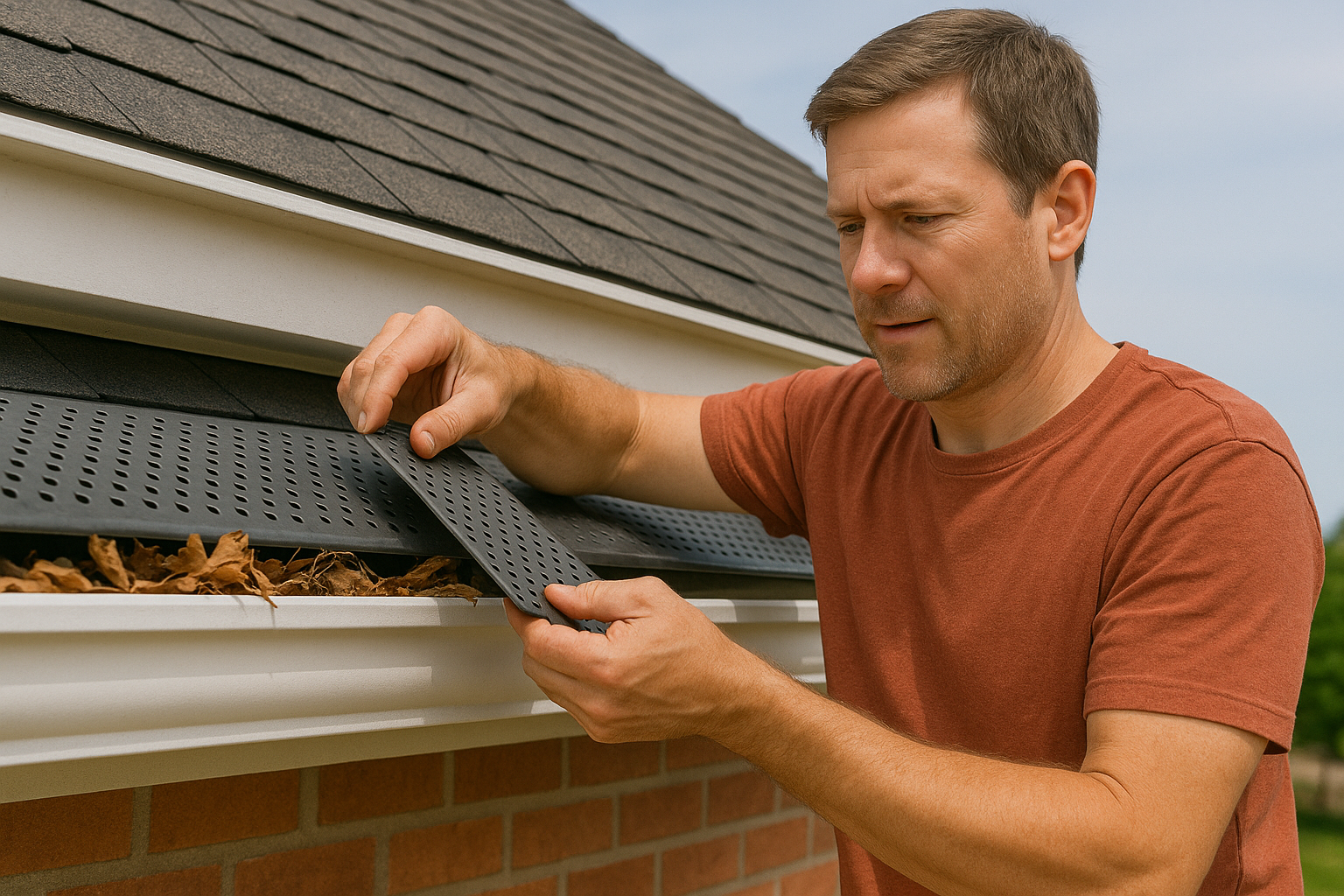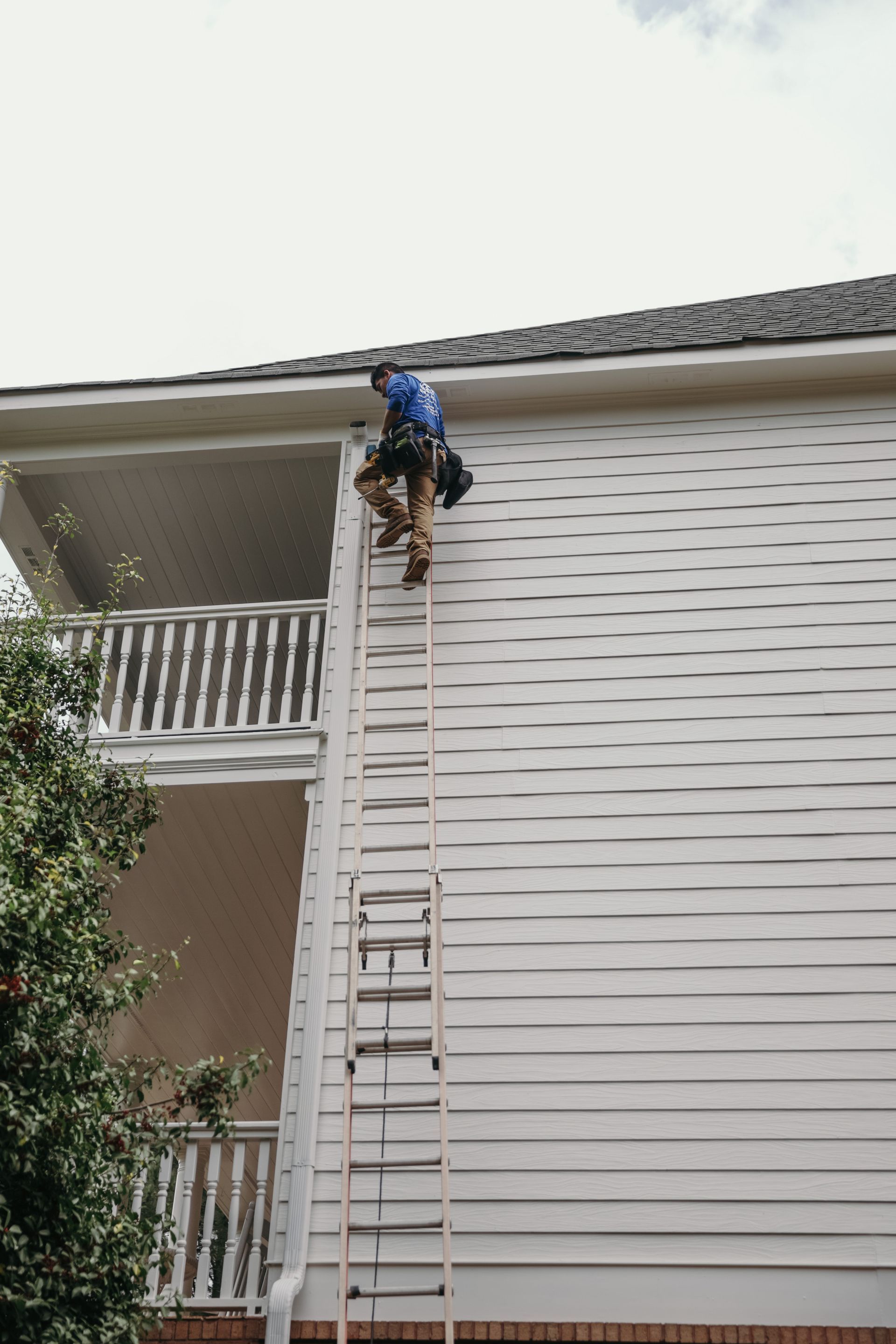How to Install Gutters: A DIY Guide or a Job for Pros?
If you’ve been staring at your sagging gutters or water dripping where it shouldn't, you already know—it’s time to do something about it. Whether you’re planning to install rain gutters from scratch or tackle a gutter replacement, this guide will walk you through your options, tools, and steps to make sure the job gets done right.
We’ll discuss DIY, seamless gutters, ladder safety, tools like pop rivets and tin snips, and when to admit it’s better to hire a professional. So, if you’ve got water pouring off your roofline, keep reading—we’ll help you choose the right gutter solution for your home.
Key Takeaways
- Gutter installation can be a DIY project, but it requires the right tools, safety, and planning.
- Seamless gutters offer better leak protection than sectional systems but usually require professional installation.
- Homeowners must consider roof slope, drainage, downspouts, and fasteners to ensure proper water flow.
- Tools like pop rivets, brackets, sealant, and gutter guards can make or break a long-lasting gutter system.
- If safety is a concern or you're unsure, it's smart to hire a gutter installation company for reliable results.
What Makes a Gutter So Important?
A gutter isn’t just a pipe hanging off your roof. It’s a critical part of your home’s drainage system. Its job? Move water off the roofline and away from the foundation, stopping rot, erosion, and water damage from becoming your next nightmare.
Without a well-functioning gutter system, you risk costly repairs to your siding, landscaping, and even the crawl space under your home. Whether you're patching holes or installing new gutters, every homeowner should understand the role gutters play.
Should You Try a DIY Gutter Installation?
Are you thinking about going DIY? It’s definitely possible. If you’re handy and have some experience with home improvement, installing rain gutters and downspouts yourself can be a cost-effective option. You’ll need tools like extension ladders, tin snips, rivet guns, and brackets—and a solid plan for proper water flow.
That said, it’s not for everyone. If you’ve got a fear of heights, complex rooflines, or unwieldy gutters to deal with, it might be safer and more efficient to hire someone instead. A lot of DIY gutter jobs seem simple—until you’re 15 feet up trying to install a downspout into a crooked wall.
What Are Seamless Gutters and Are They Better?
Seamless gutters are made from a continuous piece of metal, custom-fabricated on-site to fit your home. Unlike sectional types that join every 10 feet, seamless gutters are less likely to leak over time, making them a go-to for homeowners who want minimal maintenance.
They’re typically made of aluminum gutters, but also come in copper or steel. The downside? You can’t really install seamless gutters as a DIY project unless you own a portable gutter-forming machine. You’ll need a professional installation crew to handle the cut, fabricate, and fasten process accurately.
Tools You Need to Install Gutters Properly
If you decide to install gutters yourself, gear up with the right tools. Here’s what you’ll need:
- Ladders or extension ladders
- Pop rivet tool and rivets
- Tin snips or a hacksaw/miter saw
- Drill with stainless steel screws
- Caulk or gutter sealant
- Brackets, end caps, and downspouts
- Snips, measuring tape, and fasteners
Using the wrong tools—or skipping steps like sealing joints or cutting a downspout hole—could lead to a leaky setup. If you're not confident in using rivet guns or sealing the underside of a gutter run, it might be best to hire a professional.
Gutter Installation: Step-by-Step Breakdown
Every gutter installation starts with a plan. You’ll need to measure your linear feet of gutter, determine the number of downspouts, and account for pitch (gutters should slope ¼ inch every 10 feet). Then it’s time to install:
- Attach fascia mounting brackets using stainless steel screws.
- Snap-on end caps.
- Cut your feet of gutter to size using snips or a miter saw.
- Drill a downspout hole.
- Use pop rivets and gutter sealant to connect pieces.
- Add the downspout, fastening it to the wall.
- Check for leaks using water.
Each installation step matters. If you skip a bracket, your system could sag. If you forget the sealant, you'll see drips during the first storm. That’s why proper installation is key.
When Should You Replace Your Gutters?
If your current gutter system is cracked, rusted, pulling away, or sagging, you might be past the point of repair. Signs like peeling paint, pooling water, or visible leaks suggest it’s time for a gutter replacement.
Depending on the style of gutters you choose, materials range in price per linear foot. Vinyl is the cheapest but breaks easily. Aluminum gutters are light and rust-resistant, while steel is durable but prone to corrosion. No matter the type, a gutter replacement is one of the most valuable home improvement projects you can tackle.
How Much Does It Cost to Install Gutters?
The cost depends on size, materials, and whether you choose DIY or professional installation. For seamless gutters, expect to pay more per linear foot, but you get a longer lifespan and better protection. Basic systems cost anywhere from $3 to $30 per foot, depending on finish, color, and features like gutter guards.
Want to save money? Sure, you can buy kits from Home Depot and do it yourself—but beware: a bad install could end up costing more in the long run. Hiring a gutter installation company offers peace of mind, especially with a warranty.
What About Downspouts, End Caps, and Brackets?
Downspouts matter. They carry water from your gutter to the ground and away from your foundation. Always include enough downspouts to match your roof area—usually one every 20–30 feet. Use brackets to keep them secured and avoid movement.
Also, don't overlook the extras: end caps to seal the ends, gutter sealant to close gaps, and flash barriers to stop overflow from getting behind the fascia. The details matter in keeping your home’s gutters water-tight.
Should You Hire a Professional Gutter Installer?
Still not sure? Here’s the honest take: hire a professional if you value safety, time, and quality. Some homes just aren’t DIY-friendly. A gutter installation company can help with:
- Sourcing better materials
- Custom on-site fabrication
- Faster and safer installation
- A long-term warranty
It’s also wise to hire someone if you're working on a two-story roof, need seamless gutters, or are just not confident with a ladder and rivet gun. There's no shame in bringing in gutter people to get it done right.
Frequently Asked Questions
How long do gutters last?
Most gutters last 20–30 years, depending on materials and maintenance. Aluminum gutters last longer than vinyl and won’t rust.
Are seamless gutters worth it?
Yes, seamless gutters dramatically reduce the risk of leaks and require less maintenance. They also look cleaner and perform better in the long run.
Can I install gutters myself?
Yes, if you have the tools, knowledge, and confidence to handle a ladder and seal joints. But for multistory homes or seamless gutter installs, it’s best to hire a professional.
What’s the most common gutter material?
Aluminum is the most popular material. It is lightweight, rust-resistant, and easy to work with. It also comes in a variety of shapes and sizes to fit most homes.
Conclusion
Whether you’re going full DIY or calling in the pros, gutter installation isn’t something to overlook. The right setup protects your home from water damage, adds curb appeal, and prevents costly repairs down the line.
Need help choosing the right system? Our gutter installation pros are ready to assist with options that fit your roof, budget, and needs. Whether you’re planning to install a gutter yourself or want it professionally installed, we’ll help you avoid leaks, stress, and surprise expenses. Fill out the form today—no hidden fees, no waiting, and a fair, hassle-free estimate.





